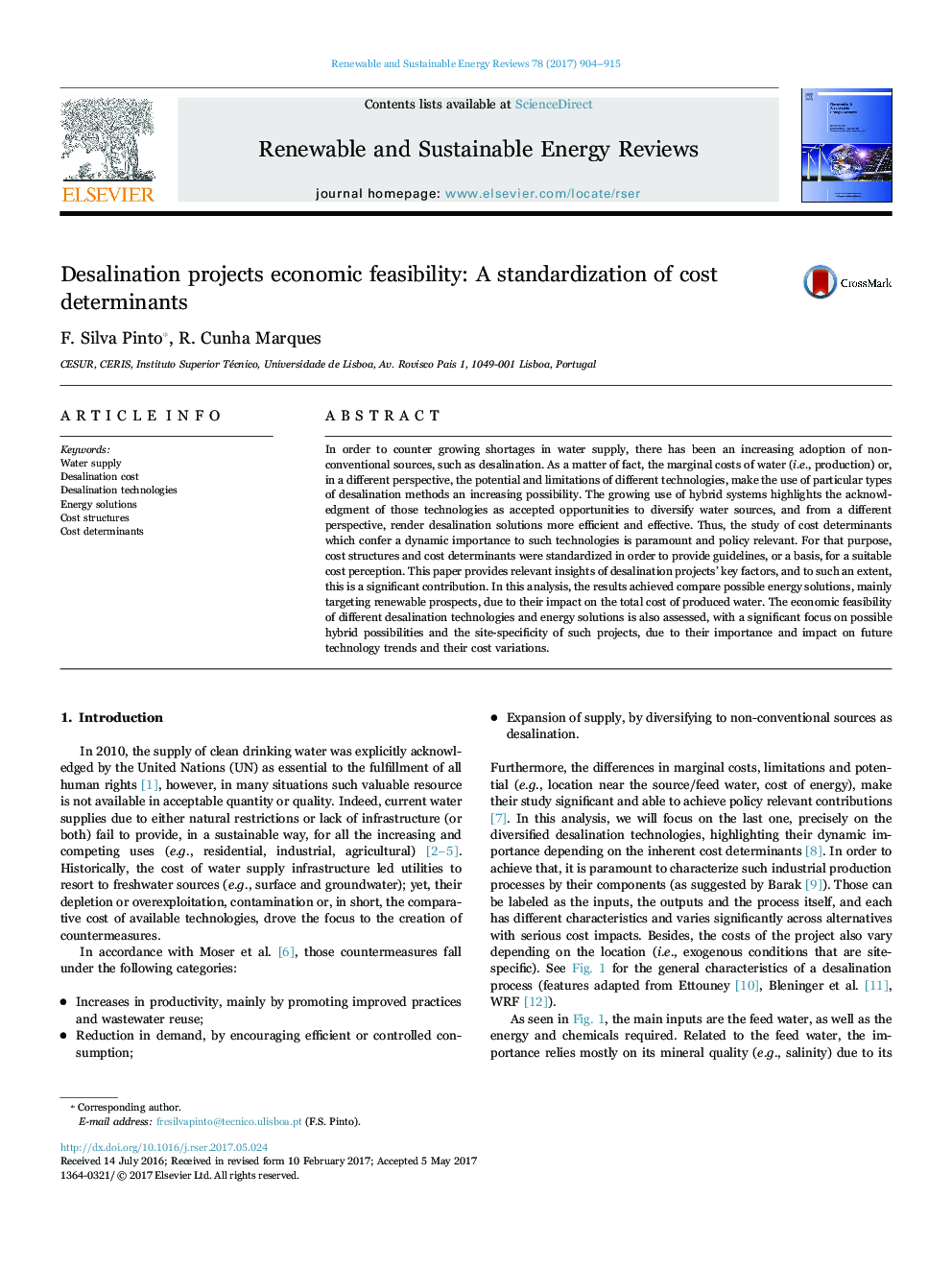| Article ID | Journal | Published Year | Pages | File Type |
|---|---|---|---|---|
| 5482512 | Renewable and Sustainable Energy Reviews | 2017 | 12 Pages |
Abstract
In order to counter growing shortages in water supply, there has been an increasing adoption of non-conventional sources, such as desalination. As a matter of fact, the marginal costs of water (i.e., production) or, in a different perspective, the potential and limitations of different technologies, make the use of particular types of desalination methods an increasing possibility. The growing use of hybrid systems highlights the acknowledgment of those technologies as accepted opportunities to diversify water sources, and from a different perspective, render desalination solutions more efficient and effective. Thus, the study of cost determinants which confer a dynamic importance to such technologies is paramount and policy relevant. For that purpose, cost structures and cost determinants were standardized in order to provide guidelines, or a basis, for a suitable cost perception. This paper provides relevant insights of desalination projects' key factors, and to such an extent, this is a significant contribution. In this analysis, the results achieved compare possible energy solutions, mainly targeting renewable prospects, due to their impact on the total cost of produced water. The economic feasibility of different desalination technologies and energy solutions is also assessed, with a significant focus on possible hybrid possibilities and the site-specificity of such projects, due to their importance and impact on future technology trends and their cost variations.
Related Topics
Physical Sciences and Engineering
Energy
Renewable Energy, Sustainability and the Environment
Authors
F. Silva Pinto, R. Cunha Marques,
